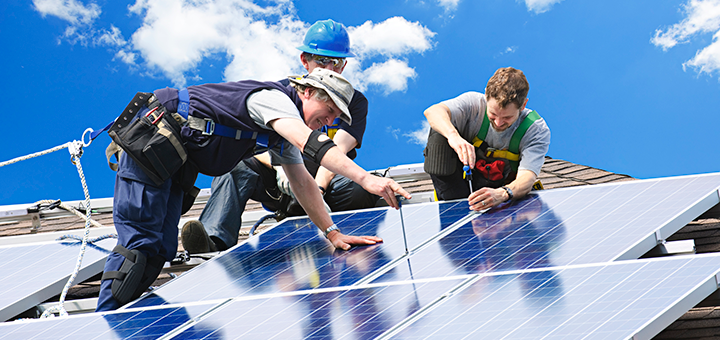Solar energy is becoming increasingly popular as the world strives to become more sustainable. With the variety of solar system options available, understanding the components and installation process can be daunting. This blog post will provide a comprehensive overview of Solar Energy system installation, from the initial assessment to the final connection to the grid. If you’re in Miami and searching for reliable solar panels solutions, look no further than WR Construction Group. Visit their website at https://wrconstructiongroup.com/solar-energy-solutions-miami/ for more information.
The process begins with a thorough assessment of the property, including the solar exposure, roof structure and any obstructions. This step is essential to ensure the system will function optimally. Next, the topology and design of the system must be determined, taking into account the energy requirements, type of system and local regulations. With the design in place, the next step is to secure the necessary permits and approvals. This can be a long process, but it is important to ensure the system meets all applicable standards and regulations.

Once the permits are secured, the components of the system can be ordered and the installation process can begin. Professional installation is advised to ensure the
1. Types of Solar Power Systems
Solar power systems are a great way to reduce your energy costs and provide clean, renewable energy to your home. There are many different types of solar power systems available, from small, portable units to larger, more complex systems. The type of system you choose depends on your needs and budget.
Smaller systems are ideal for powering small appliances and lighting, while larger systems are better for powering larger appliances and providing energy for a whole house. There are also hybrid systems which can be used to power both large and small appliances. The solar system you choose should be tailored to meet your needs and budget.
2. Cost of Installation
The cost of installation is the next factor to consider when looking into solar system installation. Installation costs vary widely depending on the size and complexity of the system. In general, the larger and more complex the system, the higher the installation cost. It is important to be aware of the installation cost of your system in order to ensure that it is within your budget. Additionally, there may be incentives available in your area that can help offset the cost of the installation. It is important to research local and state incentives before beginning the installation process.
3. Solar Panel Setup
3. Solar Panel Setup. After the wiring and mounting system for the solar panels has been established, the next step is to set up the solar panels themselves. Care should be taken to make sure that each panel is correctly aligned and pointed at the sun in order to maximize sunlight absorption. Depending on the size of the solar system, this process can be tedious and time consuming. Additionally, make sure that any loose wires are properly secured and weatherproofed to protect against inclement weather. Once everything is set up, the solar system is ready to begin generating energy.
4. Inverter Installation
The fourth step in the solar system installation process is the inverter installation. The inverter, which is sometimes referred to as a solar inverter, is a device that converts the DC power produced by the solar panels into AC power that can be used in your home. It’s important to choose the right size and type of inverter for your system, as this will affect how efficiently your solar system works. Additionally, the inverter should be installed in a location that is well-ventilated to keep it from overheating. Once the inverter is in place, it will be connected to the solar array and the electrical system in your home.
5. Maintenance Requirements
Fifthly, it is important to understand the maintenance requirements for a solar system. In order to get the most out of your solar system, regular maintenance is essential. This includes cleaning the panels and checking the wiring, connections, and batteries regularly. Additionally, depending on the type of solar system installed, it may be necessary to replace batteries or other components periodically. Finally, it is important to ensure that the inverter and other components are working correctly and to check the manufacturer’s warranty to ensure that any defects or problems are covered.
In conclusion, installing a solar system can be a complicated and multifaceted process, but with the right information, it can be done cost-effectively and efficiently. Knowing the different components that make up a solar system and the various installation options available can make the process much simpler. Additionally, understanding the financial incentives and tax credits available can make the process even more affordable. With the right knowledge and resources, anyone can be a solar expert.





Leave a Reply